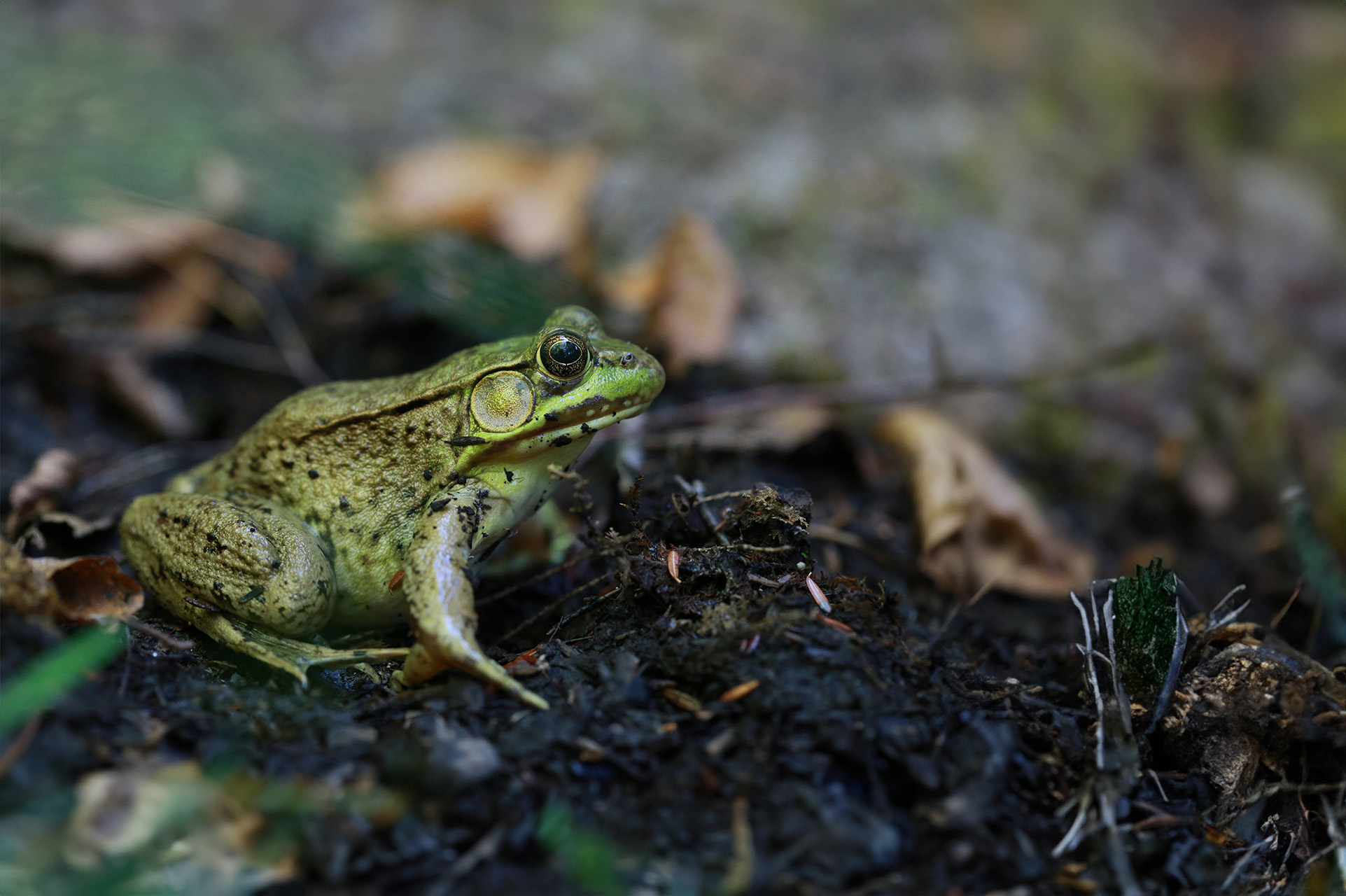By: Abeer Khan
21 Aug, 2024

Four CIFAR researchers in the Fungal Kingdom: Threats & Opportunities program have discovered a potential antidote to a devastating fungus impacting frogs and toads across the globe.
Fellows Jason Stajich, Tim James, Lillian Fritz-Laylin, Matthew Fisher and their teams are working together to discover and learn more about a virus that can be engineered to infect and destroy Batrachochytrium dendrobatidis, or Bd. The fungus, which has contributed to the decline of more than 500 amphibian species and 90 possible extinctions, infiltrates the skin of frogs and toads and eventually leads to heart failure. Bd is just one of the many fungal diseases causing the extinction of select wild species across the globe, with mass mortalities of amphibians threatening biodiversity.
“It causes an infection in the epidermis, making it difficult for them to breathe,” said Stajich, a professor at the University of California Riverside.
Although other factors, like habitat loss and environmental pollutants, have contributed to the decline of frog and toad populations, Bd has had a drastic impact on global ecosystems and contributed to massive die-offs of amphibian populations.
“To date, we don’t have good treatments,” says Fritz-Laylin, a cell biologist at the University of Massachusetts Amherst. “There are things that people have tried that seem to help but they also have other major costs associated with them,” she explains. For the Fungal Kingdom program, developing new treatments and antifungals is an important focus, as there is currently a lack of knowledge and availability in this area.
Stajich first discovered the presence of the virus by thinking outside the box. For decades, scientists have been studying Bd by sequencing its genome to better understand its diversity and origins. They take the sequence data, align it to a reference genome — the most perfect version of the Bd genome generated in 2006 by teams at the Broad Institute and Joint Genome Institute — and compare the two.
The virus was never detected before because it wasn’t present in the strains chosen for the reference genome, so scientists didn’t know it existed. Stajich had the idea to look at the “leftover lunch” — those sequences that didn’t align with the reference genome.
When he did the analysis, it looked like those sequences had genes that matched a viral gene, ultimately leading to this discovery. Another key reason the virus hadn’t been detected before was that it is a DNA rather than an RNA virus, which required a different search strategy. Most of the described and well-studied mycoviruses are RNA viruses.
“Nobody detected it before because they were always looking at different strains of the fungus without the virus — and they were looking at them in a different way,” said James, a University of Michigan professor. “So it was really there the whole time, but we just never knew it.”
When Stajich first discovered the sequences that did not match the reference genome, he emailed James, a CIFAR Fellow and longtime friend. Together, the two incorporated the question of the importance of the virus as part of a collaborative grant proposal to the Moore Foundation led by Fritz-Laylin. The grant was funded in the Foundation’s Symbiosis in Aquatic Systems Initiative to further standardize the study of amphibian-Bd symbioses. The group was also supported by a CIFAR Catalyst grant and received funding to explore the virus in Bd, alongside Fisher, a professor at Imperial College London.
“The collaboration was pretty natural because we know each other from CIFAR. It was really a natural coalescence,” James added.
James’ lab, which focused on Bd strains found in Brazil, conducted many of the experiments central to the study, testing how strains which are infected or not have different phenotypes.
Fritz-Laylin’s lab created a fluorescence in-situ hybridization (FISH) probe to visualize whether there were viral particle points in the cells. Currently, her lab is working on manipulating the fungus, creating transformations and attempting to genetically manipulate it.
“It’s been just a terrific collaboration because we all come to the table with different sets of skills,” said Fritz-Laylin. “We’re all bringing something different. It’s been really wonderful pushing science forward. But also, it’s been really fun, which is part of the reason why we work so well together.”
Overall, the Fellows’ work sheds light on how the virus can infect fungi. Now, the team knows the structure of the virus, that it resides in the genome of the fungus and has the knowledge on how to engineer it.
“At this point, this could solve two things,” said James. “One is the biocontrol aspect, where we actually try to make a weaker fungus that can’t infect frogs. The other is to do transgenics in the lab to better understand the fungus.”
Looking forward, the team will continue to better understand the biology of the infection using Fritz-Laylin’s FISH probe technology. This will allow them to study ways the viral strain can be engineered to target the fungus and ultimately work toward decoding the viral-fungal interactions, Stajich explained.
He also stressed the role CIFAR has played in facilitating important discussions and bringing Fellows together on this important work.
“The CIFAR program strengthened our ability to communicate and collaborate on this,” Stajich said.
In the future, this research opens up a plethora of potential new discoveries and applications, including a better understanding of what makes Bd different from other chytrid fungi.
“People have been interested for a long time in what gives Bd the ability to infect vertebrate animals and how it is different,” explains Fritz-Laylin.
She says people have come up with ideas — but there hasn’t been a way of actually testing them.
“Now, we can do that.”